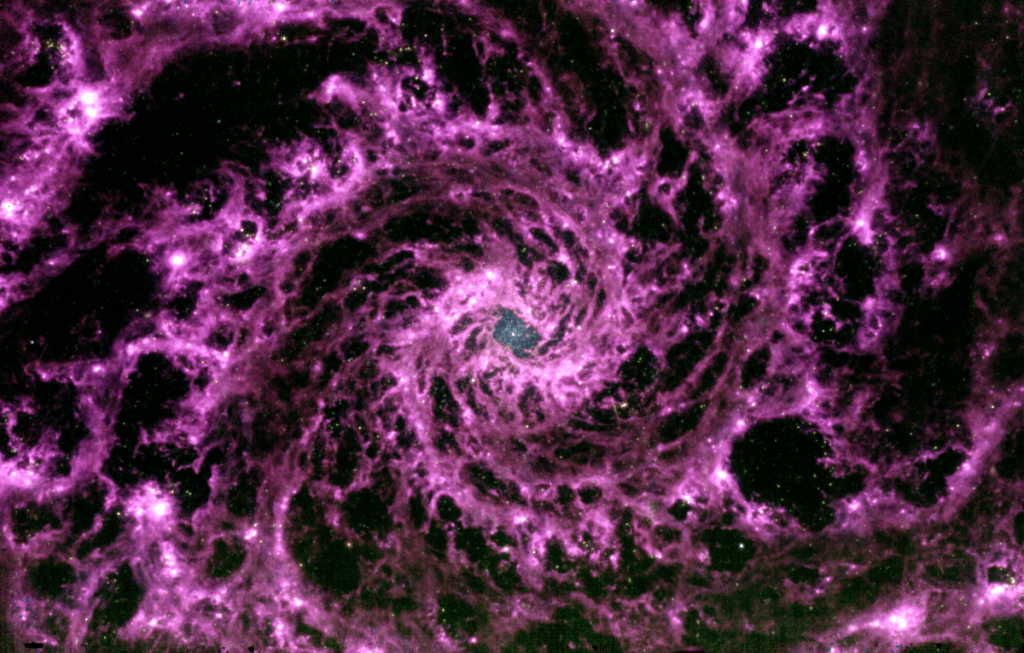This beautiful image of the spiral galaxy NGC 628, taken by the James Webb Space Telescope, shows how dust behaves in space.
This particular image of the center of the distant spiral galaxy NGC 628 shows a spectacular maelstrom of purple dust. The image, taken by the James Webb Space Telescope (JWST), can reveal important insights into how dust behaves in galaxies.
Combined image
The image consists of three datasets with different wavelengths, which were captured by the JWST center-infrared instrumentation team. Final image created by astronomer Gabriel Brammer, who was not part of the team and works at the University of Copenhagen. He downloaded the data and translated each of the infrared wavelengths into red, green and blue, then combined them all into a single image.
READ ALSO
Fake Touch
NGC 628 has previously been imaged in visible light by other telescopes, including the Hubble telescope. The galaxy resembles our own Milky Way. But thanks to JWST’s ability to sense high-resolution infrared light, the hidden structure has now been revealed. ‘If our eyes could see these mid-infrared wavelengths, the night sky would look more like this photo. It was spectacular to me and maybe a little scary’, said Brammer.
Purple
The striking purple color in Brammer’s photo is due to the unique chemical composition of the dust cloud in NGC 628. The cloud is primarily composed of large molecules called polycyclic aromatic hydrocarbons (PAHs), astronomers said. Michael Merrifield from the University of Nottingham in the UK.
These molecules only emit infrared light of a certain wavelength. When Brammer translates these wavelengths into red, green, and blue, very little green is seen. Red and blue light emissions combine to form a pink-purple color.

Too detailed
The images weren’t taken by JWST until July 17, so astronomers haven’t had a chance to study the find yet. But some scientists have commented under Brammer’s social media posts that the empty center in the image is different from what previous images of the galaxy have shown. This may indicate an interesting physical process.
Merrifield said the JWST data could also tell us something about how dust forms and redistributes in galaxies. But he added that the information was not suitable for drawing conclusions about how all galaxies formed and how they evolved. This is because too much is zoomed in and the resolution used is too high. “In fact, it’s too detailed information, as if we are now looking at the weather rather than the climate.”
Photos for everyone
Taking the photo was “very easy,” Brammer said. Hereby he mentions JWST’s advantage over Hubble which is not often talked about. ‘The James Webb telescope takes great pictures. And similar improvements have been made to technology to process and distribute data so that anyone — from astronomers to non-experts — can examine the data,” Brammer said.

“Coffee trailblazer. Analyst. General music geek. Bacon maven. Devoted organizer. Incurable internet ninja. Entrepreneur.”






